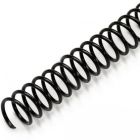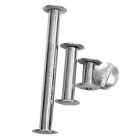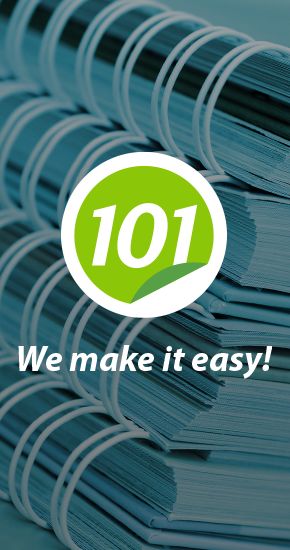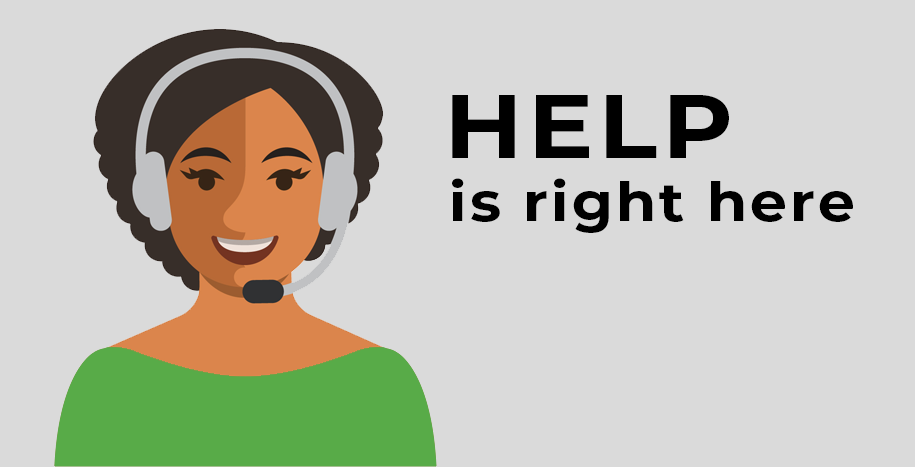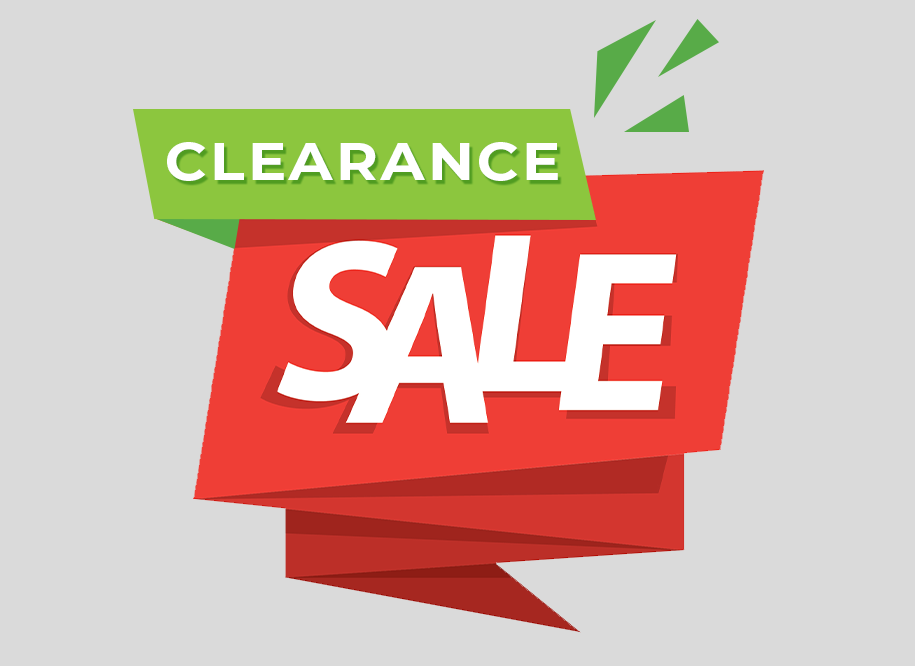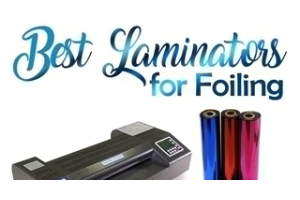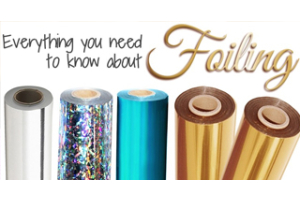What is the Best Document Binding Option?

With so many different kinds of binding, how can you know what is the best document binding option for you? It will largely depend on the kinds of documents you need to make, the thickness of those documents, the functionality, and your budget. Use this chart to help you determine what the the best document binding option is for you. You can compare many of the most popular binding solutions side-by-side, including their key features and limitations.
Click the name of the binding style to shop that binding type, or if you need help choosing, give our experts a call at (866) 537-2244 today. Below the chart we will discuss the different binding methods in more detail.
| Features | Coil | Comb | Wire-O | Spiral-O | Velo | Tape | Thermal | Screw Post | Rings | Binders | Saddle Stitch | Perfect Bind | Hard Cover |
|---|---|---|---|---|---|---|---|---|---|---|---|---|---|
| Editable | ✔ |
✔ | ✔ |
✔ | ✔ | ✔ | |||||||
| Punch & Bind | ✔ | ✔ | ✔ | ✔ | ✔ | ✔ | ✔ | ✔ | |||||
| Lay Flat | ✔ | ✔ | ✔ | ✔ | ✔ |
✔ | ✔ | ✔ | ✔ | ✔ | |||
| 360° Rotation | ✔ | ✔ | ✔ | ✔ | |||||||||
| Printable | ✔ | ✔ | ✔ | ✔ | ✔ | ||||||||
| Supply Price ($, $$, or $$$) |
$$ | $ | $$ | $$ | $$ | $$ | $$ | $ | $ | $ | $ | $$ | $$$ |
| Material | Plastic | Plastic | Metal | Metal | Plastic | Paper/ Fabric | Paper | Metal & Plastic | Metal & Plastic | Metal & Plastic | Metal | Paper | Paper |
| Hole Pattern | 4:1 5:1 |
19- Hole | 3:1 2:1 |
19- Hole | 11- Hole | N/A | N/A | Any | Any | 2, 3, 4, 6, etc. | N/A | N/A | N/A |
| Max Capacity | 50mm (1¾" Thick) |
2" | 1 ¼" (1⅛" Thick) |
1" (7/8" Thick) |
3" | 1½" |
2" | 5" + | 10" | 4" | Varies | Varies |
Varies |
- • Plastic Binding Coils - Often called spiral binding, plastic coil binding offers a continuous looped binding spine that is actually coiled. The plastic is flexible and has great "bounce back", which makes it very durable. Coil binders come in a several stocked colors including black, white, clear, red, maroon, blue, navy blue, and forest green. There are also innumerable special-order colors that can be quickly ordered, including yellow, pink, purple, and more. Spiral binding coils are available in two different lengths...a standard 12" length for letter size paper (11" binding edge), and a 36" length that can be used for extra large documents or cut-down to size by you. We can also custom-cut the coil for you if you need something more unique. Coil bindings come in diameters from 6mm to 50mm, which allows for binding just a couple of pages up to a full 1 ¾" thick stack of paper (or about 440 sheets / 880 pages, front and back). The "pitch" or hole spacing is standard in 4:1, which means that there are four coils per inch, to fit into a punching pattern with 4 holes per inch. 5:1 pitch is also available, but is primarily used by print shops with specialty applications.
• Plastic GBC Comb Bindings - Plastic comb bindings are one of the most popular ways to punch-and-bind because they are very inexpensive, can bind think books up to about 2", and can be custom printed on. Although made of a PVC plastic like coil bindings, combs do not have a true "bounce back" flexibility; this is because the shape of the comb doesn't really allow for bending of the binding spine, other than bending inward. Plastic binder combs are easy to use, and come in a large selection of stocked colors including black, white, clear, blue, navy, maroon, brown, gray, red, hunter green, and even an elegant matte black. GBC comb sizes are available from 1/4" through 2" and allow for binding up to about 425 sheets of paper (850 pages, printed front and back). Plastic binding combs have 19 rings that easily open and close using a comb spreader tool. These 19 rings fit into a standard comb binding pitch with 19 rectangular holes along an 11" binding edge. Plastic comb binders can most often be found on large businesses proposals, cook books, children's binding in classrooms and schools, and more.
• Wire-O Twin Loop Bindings - Wire-O (pronounced "wire-oh") is also often called twin loop or double loop wire binding. When you see the wire binding spines, you understand why. They have double loops that are curved and placed into punched holes, and then the entire wire is closed around your book in one motion, turning the open wire into a closed circle. Wire binding spines are available in black, blue, white, silver, pewter (matte silver), gray, gold, green, navy blue, and red. They come in either pre-cut binding spines for letter size paper, or a continuous spool that can be cut down to any size you need (most often used for industrial binding machines). Wire bindings are a bit more limited as far as document capacity goes than comb and coil, though; they are available in wire diameters from 1/4" to 1 ¼", which will bind up to about 260 sheets (250 pages printed front and back) or a 1 ⅛" thick stack. Now one important thing to know about wire binding is that is come in two different p[itches; a pitch is the hole pattern, or "holes per inch". A binding spine's pitch must match the punching machine pitch to be compatible, so it is important to know which pitch you will be using before you buy a machine or supplies. The first option is called 3:1 pitch ("three to one") and has 3 holes (or three double-loops) per inch. This smaller binding pitch is available in the smaller wire diameters, from 1/4" to 9/16". So if you will be binding thicker books, you will need to get the other option, which is called 2:1 pitch ("two to one") and has two holes per inch (or two double loops). 2:1 wire is actually available in the full range of sizes at Binding101.com; we special make smaller 2:1 wires. But typically, 2:1 wire bindings are only available in larger sizes from 5/8" to 1 ¼".
• Spiral-O Twin-Loop Wire Bindings - Spiral-O is a more unique wire binding that was produced with the look of Wire-O, but in the pitch (or hole/loop spacing) of plastic GBC comb bindings. So they have the same twin loops as traditional wire-o binding spines, but only have 19 double loops along an 11" letter size binding edge to fit into the 19-rectangular holes of a plastic binding comb punch. This gives those who have a comb punching machine the ability to create more elegant presentations with a wire spine instead, with only the addition of a wire closer to their repertoire. Since Spiral-O wires are more of a specialty item, they are stocked in a limited number of colors and sizes. They are available in black, white, silver, and blue colors, as well as sizes from 1/4" to 1", which will bind up to about 210 sheets (420 pages printed front and back) or a 7/8" thick document.
• Velo Binding - VeloBind, also called velo binding or prong binding, is a less common method in the sense that you likely won't see it on bound documents that you see in daily life. Unless you work in the law industry. See, velo binding strips are really only used for binding of legal documents, such as contracts and briefs. They can bind books as thick as 3", and are considered a semi-permanent binding style. This is because there are two thick plastic strips (one with prongs and one with corresponding holes) that are actually melted together. The only way to unbind a velo bound book is with a specialty knife tool called a velo debinder that cuts the melted prongs. Re-binding requires using a new velo strip. Velo binding machines are also on the more expensive side, and only come in larger-volume models for the legal binding industry.
• Tape Binding - Tape binding is a general term that refers to a book that is bound with a strip of fabric that has adhesive on it (it is not actually "tape"). It is also often called stripe binding or strip binding, and one of the most popular brands of tape binders is Fastback by Powis Parker. Fastback binding strips come in several styles for different looks and different machines, as well as a few popular colors including black, white, gray, light blue, dark blue, maroon, and red. There are even some unique binding strips that you can print on to customize them before you bind. Tape binding machines are very easy to use, as they are partially automated. Basically you would place your document pages into the machine, and the machine would tell you what size binding strip it needs. You then slide in the binding strip into a slot, and it uses heat to activate the adhesive and bind your pages together. Fastback strip binding is fast and easy, and doesn't require any punching.
• Thermal Binding - Thermal binding uses heat and pre-made thermal binding covers that already have glue applied into the spines. It is one of the easiest way to bind together pages in a really professional way; you just place your pages into the cover, and then place the cover into the thermal binding machine. The heat plates automatically turn on and activate the adhesive in the spines, pulling your pages down into the glue and making a tight bind. You then move your books to a cooling rack and allow the glue to finish setting. Once complete, thermal bound books are durable and look fantastic. One of the great things about thermal binding is the variety of thermal bound covers that are available; there are soft covers with clear fronts, or linen covers, or even several different kinds of hard cover options. They even offer printable covers so you can create a premium printed presentation without spending a ton of money at the print shop. There are two popular thermal binding brands: Coverbind and Unibind. Though they use the same basic thermal binding method with covers that have glue in the spine, they are inherently different. Coverbind uses a glue+mesh combination that creates an unheard of binding strength, and has binding machines that are tabletop for lower volume users, as well as more automated solutions for high volume thermal binding. They also have a larger selection of cover styles, including the printable options mentioned before. The covers are seamless from the front, to the spine, to the back; made of the same material to look very professional and clean. Unibind uses a steel binding spine that is attached to either a clear cover, not attached to any cover (just the spine) so you can use your own cover, or a hard cover option. The spine is more like a traditional binding method in the way that it looks like a binding spine was applied to the covers and pages, rather than looking like it is attached. It is the more old fashioned way to thermal bind, and Unibind binding machines are manual tabletop models only.
• Screw Post Binding - Also called Chicago screws or binding posts, screw posts are a very inexpensive and easy way to bind your pages together. They are primarily used for engineering firms, graphic agencies, and print shops. Chicago binding posts are easy to edit, since they just screw together and unscrew to come apart. They will require punching of holes, but there is not set pattern needed since each screw post is an individual binding piece. So you can punch just one hole in the corner, two holes at the top, or three or twelve along the binding edge...as many or as few as you want to use is completely up to you. Screw posts are available in several materials, including metal (aluminum or steel) and plastic. They also come in tiny sizes to bind together just a couple pages, up to long 5" binding posts that can even be expanded further with optional extensions (aluminum and steel only). Steel screw posts are silver, aluminum come in silver, black, gold, or antique brass, plastic push lock posts come in white, clear, or black (depending on the style).
• Binding Rings - Loose leaf binder rings are like screw posts, in that you can use as few or as many as you want to bind together pages. They are also more versatile, since they can be used to bind paper, as well as a huge variety of other materials. Just some of the popular uses for book rings are fabric swatches, crafting, and home organization. Binding rings come on both metal and plastic styles, as well as even different shapes. The most popular ones are standard loose leaf metal binding rings, which are available in silver or gold colors. Next up are the screw lock rings, which are similar, but have one straight edge with an actual screw mechanisms to create a more secure bind. The plastic options include a round snap lock that comes in white, clear, or black and in three small sizes, an oval snap lock ring that comes in white or clear and one size, or an overlap plastic ring that comes in white or clear and one size. Binding rings come in tiny 1/2" rings, or huge 10" rings...so the variety of uses are immeasurable.
• Ring Binders - Everyone knows what a ring binder is, and everyone has one or more at their home and office. They are incredibly popular, a true staple in paper binding and organizing. Schools, offices, governments, manufacturing, and everyone else uses ring binders for one thing or another. Ring binders are stocked in two different materials / styles. The first is called a view binder (or clearview binder) and is made of a vinyl-wrapped chipboard that has clear pockets on the outside that let you insert custom sheets. Clear view ring binders come in a huge selection of colors, including black, white, great, red, maroon, purple, yellow, orange, and a variety of blues and greens. They also have inner pockets, and are very sturdy. The other option is a poly binder (or plastic binder). Poly is the more popular option for schools, churches, and medical offices - they are durable and can easily be wiped clean without damaging them. Poly binders so not have any pockets (though we can custom make them with pockets for you) and come in three different thickness options; 23, 35, and 55 gauge. The color selection is vast, including black, white, beige, yellow, orange, red, maroon, green, blue, and more. One thing to note about poly binders is that they are made to order and sold in a "lot" of 100. We can also make custom printed ring binders, and get you the index tabs and sheet protectors you need for inside the binders.
• Saddle Stitch Binding - Saddle stitching is also often called magazine binding, or spine stapling. It is the kind of book binding that has large pages folded in half, and then stapled along the folded edge, creating a bind that is not intrusive to the images at all. This is why magazine printers like it so much. Saddle stitching can be done in one of three ways...the first is with a saddle stitching machine, which uses a spool of continuous wire that is placed and cut into your book. The 2nd option is with a saddle stapler that uses already pre-cut staples. And the 3rd way is with a booklet maker, which will fold and staple your pages on the spine, but has a thinner max capacity, and so is usually used for "booklets" rather than magazines and the like.
• Perfect Binding - Also called soft cover binding, perfect binding is what you see on soft cover novels and books. It is a method that requires a large perfect binding machine that will add texture to your book block binding spine, apply glue, and then apply your own custom made cover around the book block. They are semi-automated equipment, and are used in a more industrial space, such as at print and copy shops, and not suitable for most offices. Most perfect binding machines can also tape bind and make pads of paper, making them quite versatile.
• Hard Cover Binding - Also called case making, hard cover binding includes making the actual hard cover "case", and then binding it to your book block pages. They are used for higher volume workloads, such as those in print and copy shops, and are typically not suitable for office binding either. If you want to make hard covers for your office, though, you can use thermal binding; scroll on up to read about thermal binding as a solution.
"Best" is really a subjective word, so if I had to choose a favorite kind of binding personally, it would be thermal binding using Coverbind. I am also a fan of wire binding, but don't really like to punch-and-bind them myself (I just love the look and feel of a wire bound book, especially when they have a hard cover attached). Loose leaf binding rings are also really fun to use. With so many factors weighing in on what "best" actually means when it comes to document binding, the most important things to think about to determine which will be best for you include the maximum thickness you need to bind, the kind of books you want to make, the functionality you need for the finished book, and your budget.
I hope this detailed guide gave you all of the information you need to make that decision. If not, please call our experts at (866) 537-2244 for one-on-one guidance to answer all of your questions, and help you find the best binding style for your needs. Thanks for reading! See ya next time ☺
 About the Author • Mallory Morsa is the product expert and content specialist at Binding101, and has been a valued team member since 2008. She started her career here in customer service, moved onto sales supervisor, product management, and then onto content. She takes a hands-on approach to products, and truly gets to know how every item works before she writes about them, with a goal to give you all of the honest information you need to make a confident buying decision. She has a bachelor's degree with a focus on management and marketing, and has been a writer, photographer, and videographer for many years. In her free time, she loves to read by the pool, volunteer at the local animal shelter in the kitten nursery, and snuggle her three furbabies while she binge watches Netflix.
About the Author • Mallory Morsa is the product expert and content specialist at Binding101, and has been a valued team member since 2008. She started her career here in customer service, moved onto sales supervisor, product management, and then onto content. She takes a hands-on approach to products, and truly gets to know how every item works before she writes about them, with a goal to give you all of the honest information you need to make a confident buying decision. She has a bachelor's degree with a focus on management and marketing, and has been a writer, photographer, and videographer for many years. In her free time, she loves to read by the pool, volunteer at the local animal shelter in the kitten nursery, and snuggle her three furbabies while she binge watches Netflix.



